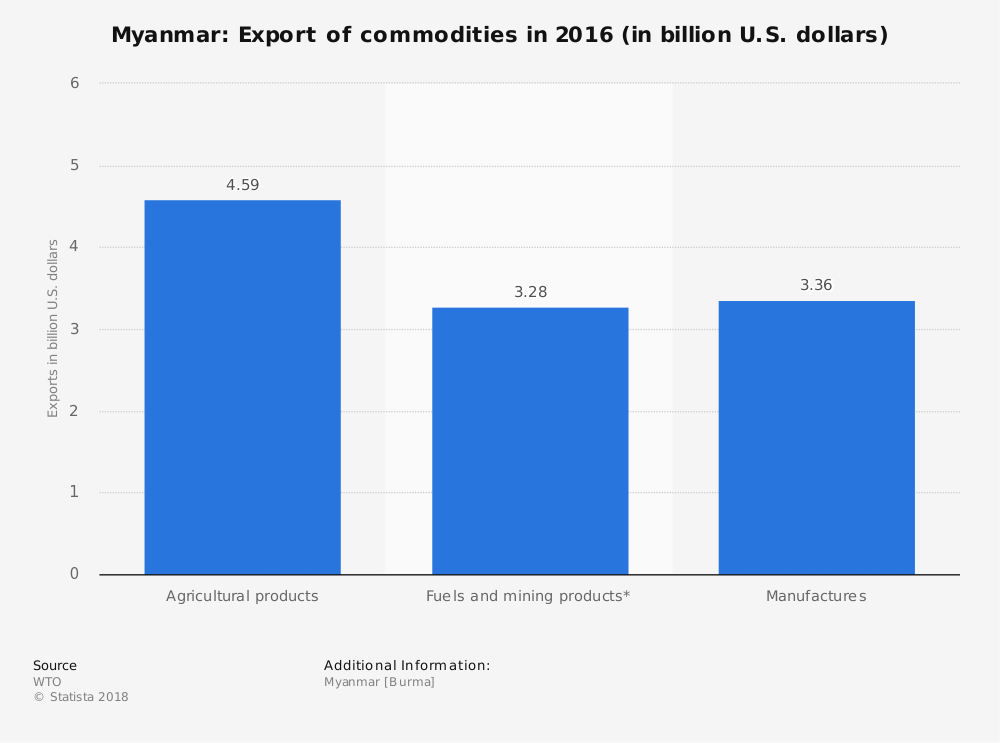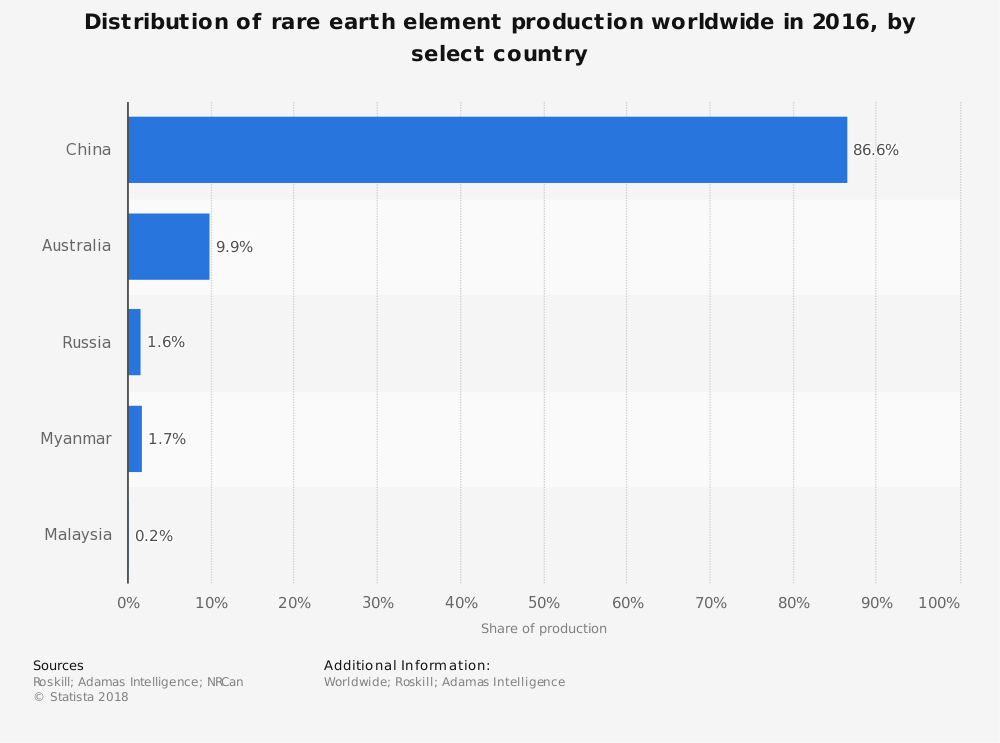Myanmar, which has also been known as Burma, is one of the largest nations in Southeast Asia. The country may be one of the poorest in the world, thanks to its isolation from the global stage for the past 5 decades. It is also one of the wealthiest nations in the region in terms of natural resources.
The mining industry in Myanmar is antiquated and neglected because of the economic and political concerns the country has experienced historically. Since the 1960s, however, the reserves of lead, zinc, copper, tin, nickel, and silver have been reduced to artisanal mining only.
The Myanmar mining industry once made the country one of the wealthiest in the world. Today, the industry accounts for just 0.1% of the GDP.
There are some positives to find in an industry that has experienced 50+ years of decline. With the elections of 2015, there is a lot of potential for the industry to redevelop, locate new resources, and begin the process of exporting materials once again.
Interesting Myanmar Mining Industry Statistics
#1. The Myanmar mining industry is responsible for about 90% of the ruby and jade production found in the world today. These precious stones, including sapphires, are one of the largest export items for the country. Myanmar is believed to have the largest jade deposits in the world. (U.S. International Trade Administration)
#2. In 2016, Myanmar earned about $600 million from lots of jade, pearls, and gems. Total sales from the annual emporium were down about 10% from the previous year. (U.S. International Trade Administration)

#3. In 2017, about $3 billion in foreign direct investment had been approved for use by the Myanmar mining industry. Over 70 foreign enterprises are involved with this investment, which represents less than 5% of available inward investments. (U.S. International Trade Administration)
#4. Myanmar is ranked 156 out of 174 countries in terms of total transparency, which means corruption within the industry is a major problem. That ranking places Myanmar between Cambodia and Zimbabwe. (Transparency International)
#5. Myanmar is ranked 24th in the world according to its overall mineral potential for future mining activities. (AusIMM Bulletin)
#6. Over the past 5 years, tin mining within Myanmar increased by 4,900% between 2010-2014. Despite the challenges facing the industry, that places Myanmar as the third-largest tin producer in the world. More than 10% of the world’s tin is now mined in Myanmar. (AusIMM Bulletin)
#7. Energy and mining is responsible for 55% of the exports that are shipped from Myanmar each year. (SES Professionals)
#8. Mining laborers are paid in either fixed payments or as a share worker. Share workers receive the balance of the day’s estimated profits after labor, fuel, and other costs are deducted from the gold they directly discover. Some days, their pay may be less than 50 pyas. In U.S. dollars, that would be like receiving $0.00037 for a full day of work. (Radio Free Asia)
#9. Wage workers in the gold mines of Myanmar are paid based on their gender. Men receive about 5,000 kyats per day, or about $4. Women receive 3,000 kyats per day, or about $2.50. They do not benefit from the gold they may discover. (Radio Free Asia)
#10. Wage workers earn the exact amount of what it costs to purchase a day’s worth of heroin. Many workers in the mining industry use heroin three times per day. (Radio Free Asia)

#11. Workers in the mining industry average about 20 years of age, though some wage workers can be as young as 13. (Radio Free Asia)
#12. As of March 2012, there had been 1,355 mining permits that had been granted to private citizens within Myanmar. About 40% of those permits were for exploration. Just 20 permits had been issued for subsistence mining. (Crossroads Magazine)
#13. As of 2010, the Myanmar mining industry employed about 90,000 people. (Crossroads Magazine)
#14. Artisanal and small-scale gold mining contribute high levels of mercury into the environment, which is the type of mining most prevalent in Myanmar. More than 35% of anthropogenic emissions globally occur from these processes. In a study of young women from 25 different nations, the levels of mercury were highest for women from Myanmar. (Royal Norwegian Embassy)
#15. Estimates for the available gold production within the Myanmar mining industry place the yearly output at 54,400 troy ounces. At current gold prices, that output offers a potential value of around $75 million. (Royal Norwegian Embassy)
#16. The gold mining segment of the Myanmar mining industry is believed to be dumping up to 36 pounds of mercury into the country’s waterways every day. (Royal Norwegian Embassy)
#17. Delicate figurines that are carved from jade that is mined in Myanmar can be priced as high as $250,000. At a Christie’s auction, a necklace made from 27 beads of jade was sold for $9.39 million. (Facts and Details)
#18. Most of the jade deposits in Myanmar are located around the town of Hpakan, which is 200 miles north of Mandalay. Top colors from this area were already selling as high as $100 per kilogram in the 1980s, with translucent jade priced at $50,000 per kilogram – or higher. (Facts and Details)
Myanmar Mining Industry Trends and Analysis
Until the U.S. markets open to the Myanmar mining industry, it will be difficult for the full potential of this industry to be realized. Sanctions prohibit the import of Burmese rubies, jade, or jewelry containing these items to the United States.
Transparency is beginning to happen within the industry, however, and that offers the potential of hope for the future. Foreign investors have been permitted to enter the industry since 1994. Loyalty fees have recently been reduced and operating licenses have been extended as well, up to 50 years for large-scale projects.
Smuggling has always been part of the Myanmar mining industry as well, especially when it concerns jade. If all revenues from jade sales are calculated, including black market transactions, the annual value of the mining industry could be as high as $8 billion annually. That would make the sale of jade, on its own, be more than double Myanmar’s revenues generated by natural gas reserves.
Production sharing ratios are in place. New environmental guidelines are in place to preserve the vast array of natural resources which are available in Myanmar. In time, this industry could once again thrive and make the nation wealthy. The first steps have been taken. Now the political influences must remain consistent for the next steps to occur.
Although millions of people visit Brandon's blog each month, his path to success was not easy. Go here to read his incredible story, "From Disabled and $500k in Debt to a Pro Blogger with 5 Million Monthly Visitors." If you want to send Brandon a quick message, then visit his contact page here.
